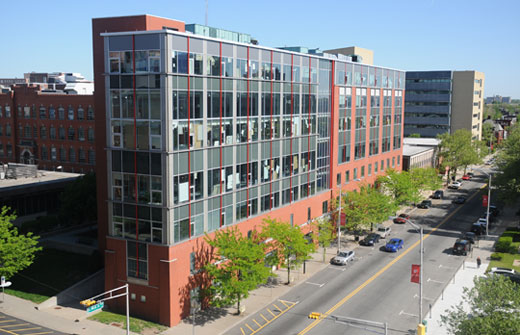NJIT’s Architecture & Design program celebrates the success of its first accessible design competition
Throughout the past two months, dozens of bright minded and ambitious students at NJIT’s School of Architecture showcased their talents in efforts to design a structure, mindfully making life less difficult for the people in their community. Freedom by Design (FBD) is the American Institute of Architecture Students (AIAS)’s community service program that actively promotes the practical application of the skills and knowledge learned in the classroom to radically impact the society around them. It seeks to challenge students to address the daily struggles of low-income or physically impaired individuals; students modify homes in need of facilities that allow for more accessible modes of bathing or stair ascension.
The program promotes the practical application of skills and knowledge learned in the classroom to impact the lives of the public. It seeks to challenge students to address the daily struggles of low-income and physically impaired individuals. Through the program, students propose modifications for facilities to improve their accessibility.
This year, the program leaders posed a challenge to NJIT’s School of Architecture: reimagine and update the exterior of the Occupational Training Center (OTC) of Burlington, New Jersey, a center to teach life and vocational skills to people of all ages and disabilities.
The project was quite the undertaking, as admitted by Darius Sollohub, the director of FBD. The competition process began two months ago on September 20th, when twenty teams of students were first introduced to their task. The first phase of the project had students compete in a massive design-thon, working tirelessly to draw and polish their visions of the new training center, which they would then propose to a jury of three architecture professors. From there, six of the original twenty groups were chosen to further develop their designs.
In the second phase, students were allotted one month to construct a model that would be presented before a jury of faculty and a representative from the OTC. Two finalists were then called to give a final presentation based on the feasibility of construction under a $50,000 budget.
After much deliberation, the winners were selected. The first place team consisted of Eric Bieber, Nate Roberts, Stephanie Tabares, and Salone Idrovo, while the second place team consisted of Andrew Burke, Michael Yanoso, and Andrew Ferro.
Speaking on behalf of his winning team, Eric Bieber explained that their success was realized by using preexisting modular panels to their advantage, while uniting a wide variety of other elements for aesthetic appeal. Successful designs were those that integrated the existing façade, as well as those that considered economical factors in choosing materials that were more affordable (for example, using plastic over a more expensive material, such as glass). The latter approach was featured in the design that was awarded second place; the lightweight and easily installed plastic proved to be both functional and economically sound.
With the design chosen, Freedom by Design and the Occupational Training Center are now in search of an architect to help finalize the winning team’s blueprints for little to no charge, all for the benefit of the public good—pro-bono work, so to speak.
Though the Freedom by Design program focuses on bringing awareness to the importance of charitable design, the competition also exposed students to clienteling, the practice of showcasing their designs to potential clients. It is one of the real-world skills that can really only be developed through experience. It is for these reasons that the professors of the College of Architecture and Design are always encouraging students to enter themselves in competitions such as this one.
There is an irrefutably sizeable amount of talent in the university that begs to be unleashed to world at large. Unfortunately, these competitions do not seem to arise very often, and the students may just have to wait until next year’s FBD competition to demonstrate their abilities once again.



























